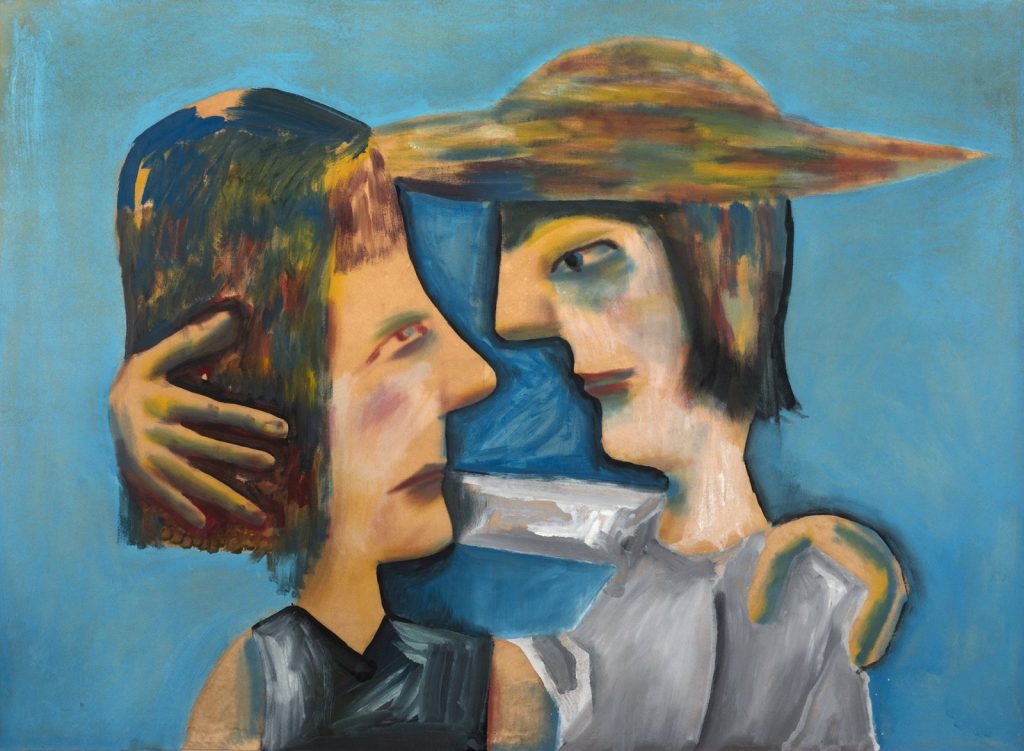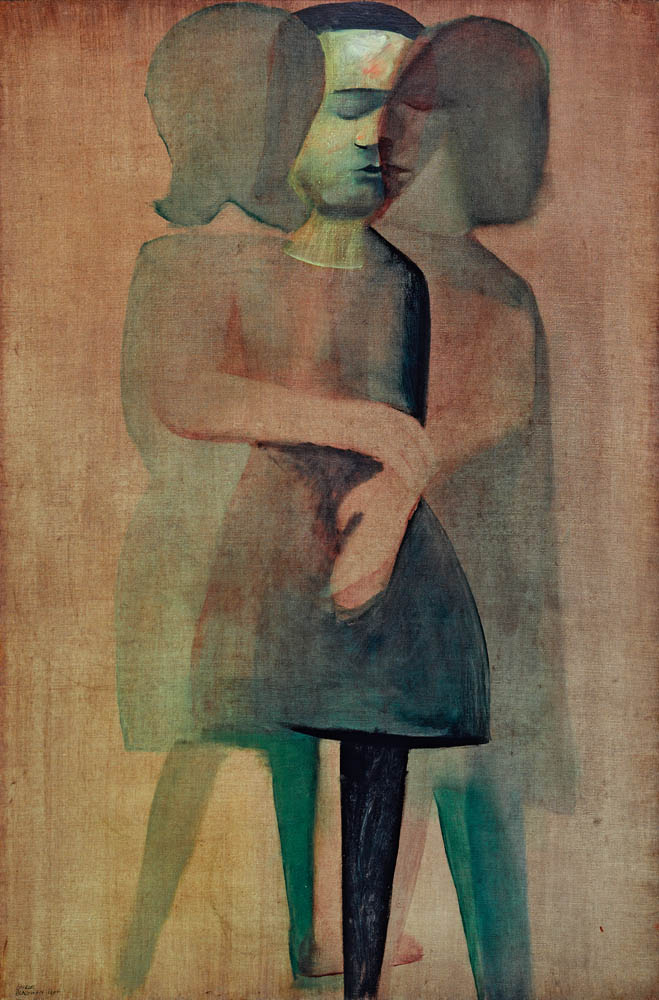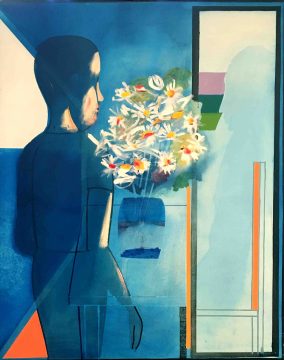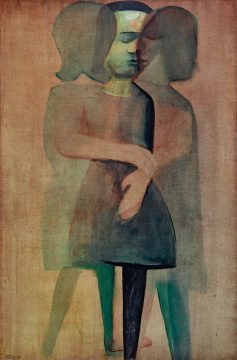Charles Blackman (1928 - 2018)


Barbara Blackman and Judith Wrightc. 1
oil on paper on board
97 x 131cm
Provenance
Private collection, Sydney


An Illusion of Children1964
oil on canvas
signed and dated lower left
137.5 x 91.5cm
Essay
Related Work:
Illusion of Children, c. 1966, oil on canvas, 152.0 x 195.0cm, private collection
Illusion of Children, c. 1965, oil on composition board, 159.0 x 124.0cm, private collection
‘Charles Blackman has been one of Australia’s most celebrated artists for over seventy years, establishing his reputation with his iconic Schoolgirls series (1952-1955) and then Alice in Wonderland series (1956-1957). In August 1959, he participated in Bernard Smith’s (1916-2011) landmark exhibition Antipodeans, the catalogue for which included ‘The Antipodean Manifesto’. This significant essay protested the current trend for Abstract Expressionism and championed figurative art, which Blackman signed alongside Arthur Boyd (1920-1999), David Boyd (1924-2011), John Brack (1920-1999), Robert Dickerson (1924-2015), John Perceval (1923-2000) and Clifton Pugh (1924-1990). The following year, Blackman won the recently-established Helena Rubinstein Travelling Scholarship, and, following the path of many Australian artists, moved to London.
Between 1961 and 1966, Blackman and his family were a vital part of the Australian expatriate community. ‘My contemporaries in London were more or less the same that they were in Australia, except that I probably saw them more often,’ he explained.1 Blackman’s social circle included Arthur Boyd, Brett Whiteley (1939-1992) and Sidney Nolan (1917-1992), as well as other creative men like Al Alvarez and Barry Humphries. His wife Barbara remarked ‘our lives seemed to flow close together, to intertwine and follow common currents. There seemed to be endless parties, most of them at our house’.2
Blackman painted An Illusion of Children in 1964, the year they moved from Highgate, where their home was the hub of the Australian creative community, to Hanover Gate Mansions in Marylebone, to an apartment overlooking Regent’s Park. Barbara pointed out they were leaving behind their apartment ‘opposite the graveyard, where our favourite poet, Coleridge, was buried’.3 The couple shared a love of literature, which the artist read aloud every day to his wife, who was blind. This was a constant source of inspiration to Blackman, with the Symbolist work of André Gide (1861-1959) and Arthur Rimbaud (1854-1891) particularly influential in his early work –there are echoes of this in An Illusion of Children.
In An Illusion of Children, a young girl stands with her eyes closed: what is she daydreaming about? Two ghost-like silhouettes accompany her, uncanny shadows that imply the many layers to her identity, her hidden inner life. Blackman returned frequently throughout his career to this study of shadows, of figures fading and multiplying, echoes of themselves. Such silhouettes feature in several of Blackman’s works from this time, including The Blue Room and Window Shadow, both from 1965. He also painted many images of children during this period, when he had three small children of his own. Barbara commented that ‘Often he picks up the children from school and walks home with them, waits while they have a swing, that sort of thing’, an activity that manifested in his works set at playgrounds including Playground, Children Playing and Children at Play of 1964.4
In a review of a 1967 solo exhibition at Albert Hall, Canberra, Donald Brook cogently described how: ‘Looking at Blackmans is like looking at another’s carefully edited dreams…They are haunting pictures, I think, because, like ghosts, they assume the shape and meaning that the viewer projects upon them.’5 It is this fluidity, this undercurrent of emotion, which helped Blackman become one of Australia’s most renowned artists. He is represented in the National Gallery of Australia, all Australian state galleries and many regional collections, and in 1997, Blackman was appointed an Officer of the Order of the British Empire in recognition of his service to Australian culture.’
Footnotes
1. Pierse, S., ‘Australian artists in London: The early 1960s’, Australians in Britain: The Twentieth-Century Experience, Melbourne: Monash University ePress
2. Pierse, S., ‘Australian artists in London’
3. ‘Poets Write About Their Touching Story’, The Australian Women’s Weekly, 25 May 1966, p.15
4. ‘Poets Write About Their Touching Story’, The Australian Women’s Weekly, 25 May 1966, p.15
5. The Canberra Times, 23 November 1967, p.35
By Dr Kate Robertson, PhD University of Sydney


Provenance
Private collection, Peru;
Sotheby’s, Important Australian Art, Sydney, 09/04/2019, Lot No. 79;
Private collection, Australia
Exhibited
Reflections by Charles Blackman, The Johnstone Gallery, Brisbane, 14-31
August 1966, no. 5
Essay
The Road, a dreamlike and lyrical painting by Charles Blackman was created in 1966 upon the artist’s return to Australia from London. During his time in Europe, Blackman had mingled and worked with other expatriate Australian artists including Arthur Boyd, Brett Whiteley and Fred Williams.
The 1960s saw the rise of abstract expressionism and with it, a vehement rejection by its major exponents of more figurative artistic practices. This in turn was a major factor in the formation of the Antipodean group, founded by academic and historian Bernard Smith. This movement reacted against the perceived emergence of a “fanatical devotion to the principles of abstract art and a rising intolerance of figurative painting,”1 that had taken hold of Sydney’s art scene. Their manifesto asserted their right to draw inspiration from life, nature and their surroundings, central to which was the importance of recognisable imagery, stressing too the importance of artistic diversity.
Like many of Blackman’s paintings, The Road is notable for its balance of simplicity and richness inviting reflection and contemplation.
1. Bernard Smith, Australian Painting 1788 – 1970, Melbourne, Oxford
University Press, 1971, p. 326


Gymkhana Visitors1961
oil on composition board
inscribed 'The Mysterious/Rodeo/ Charles Blackman' verso
122 x 122cm
Provenance
Mrs Barbara Blackman, London;
Barry’s Art Gallery, Surfer’s Paradise, Queensland, 1970;
Private Collection, Adelaide;
Deutscher-Menzies, Modern Masters 2001 + 19th & 20th Century Australian and International Art, Melbourne, 9 May 2001, lot 18;
Gould Galleries, Melbourne and Sydney (stock 12,667), acquired from the above;
Mr Russell Crowe, Sydney, acquired from the above in 2004;
Sotheby’s, Russell Crowe: The Art of Divorce, Sydney 7 April 2018;
Private collection, Sydney
Exhibited
Paintings and Drawings: Charles Blackman, The Matthiesen Gallery, London, 3-25 November 1961, no. 4.
Zeitgenössische Malerei und Skulpturen australischer Künstler in Europa, Städel’sches Kunstinstitut, Frankfurt am Main, 4 July – 11 August 1963, no. 11, ‘The Mysterious Gymkhana’, illustrated.
Charles Blackman: The Early Years 1951-1974, Gould Galleries, Sydney, 18 February – 28 March 2004, no. 13, illustrated.


Interior Still Life17 x 22.5cm
oil on board
signed upper right corner ‘Blackman’ ‘Johnstone Gallery’ exhibition label attached to reverse
17 x 22.5cm













